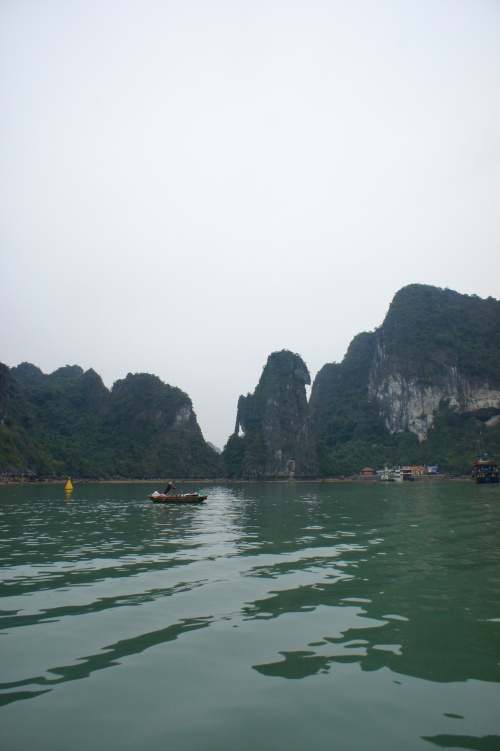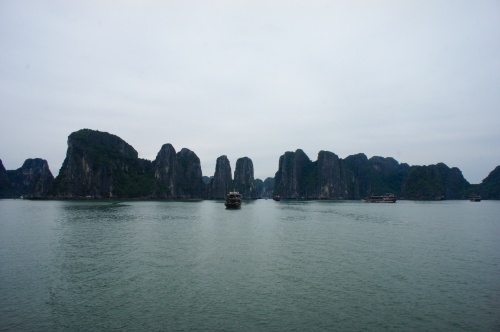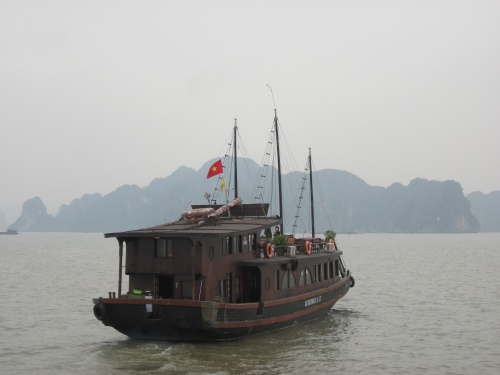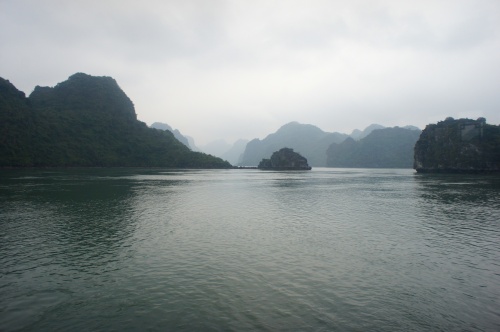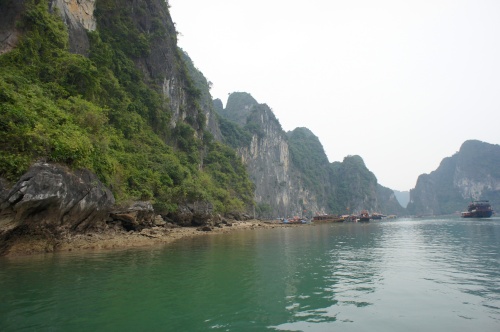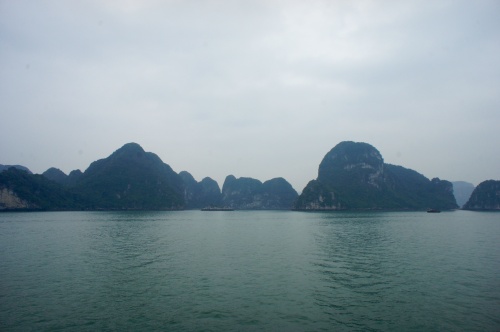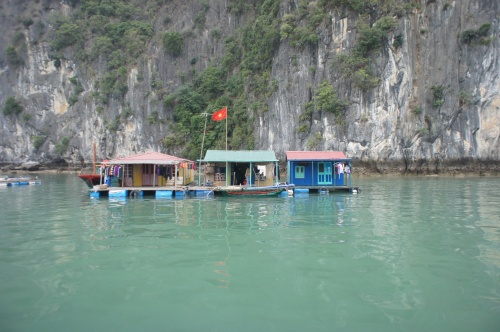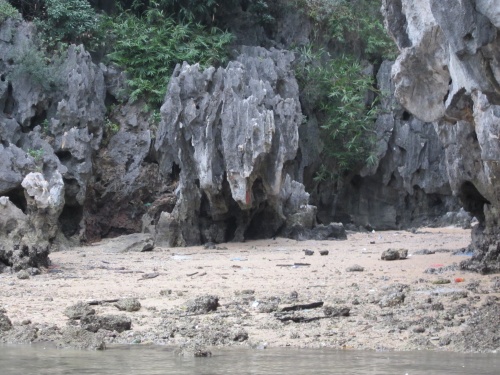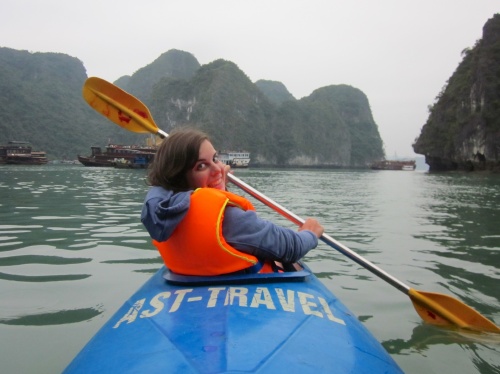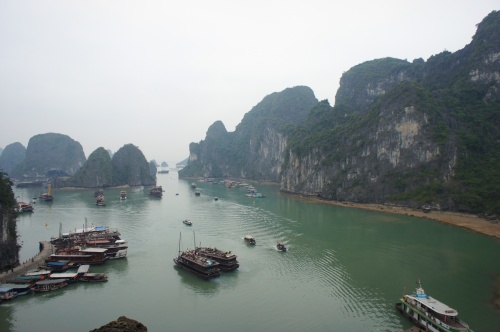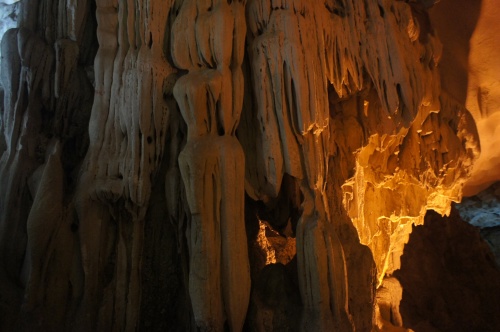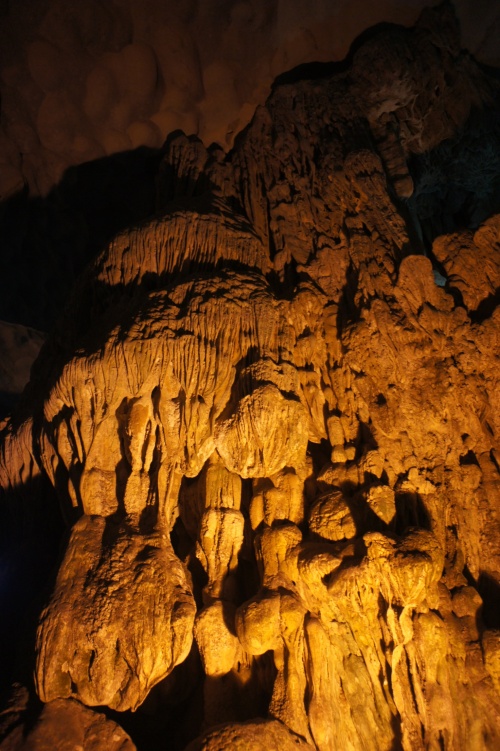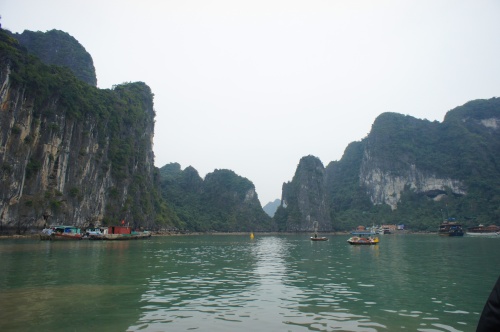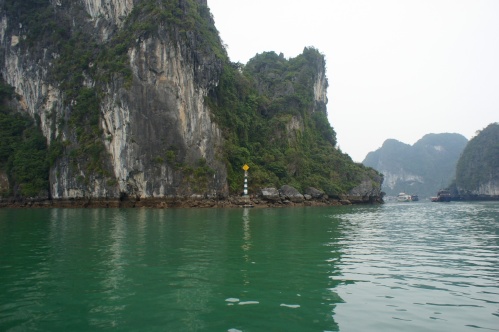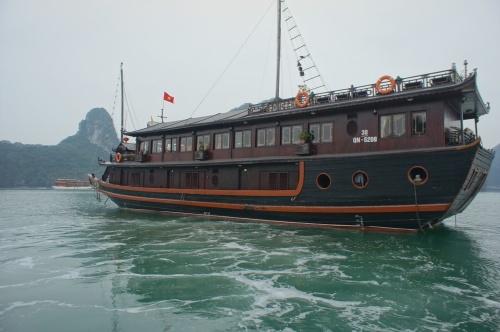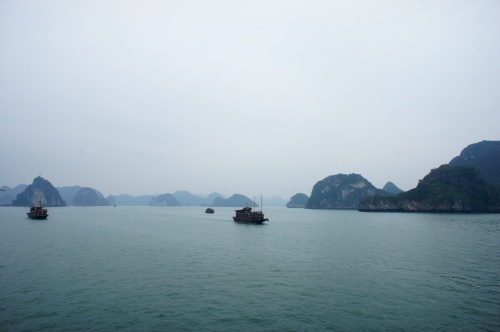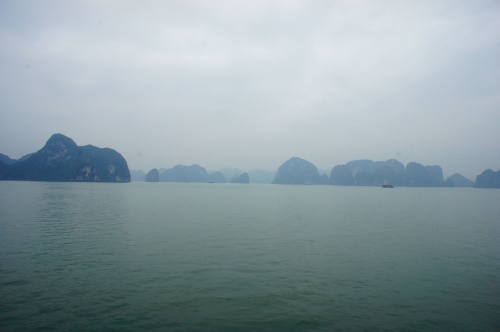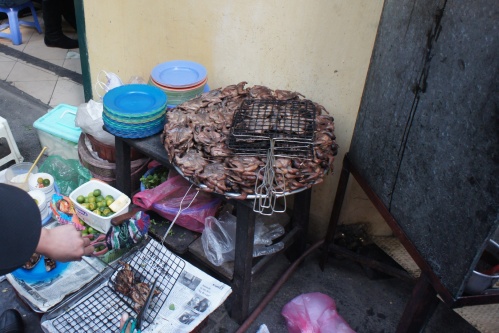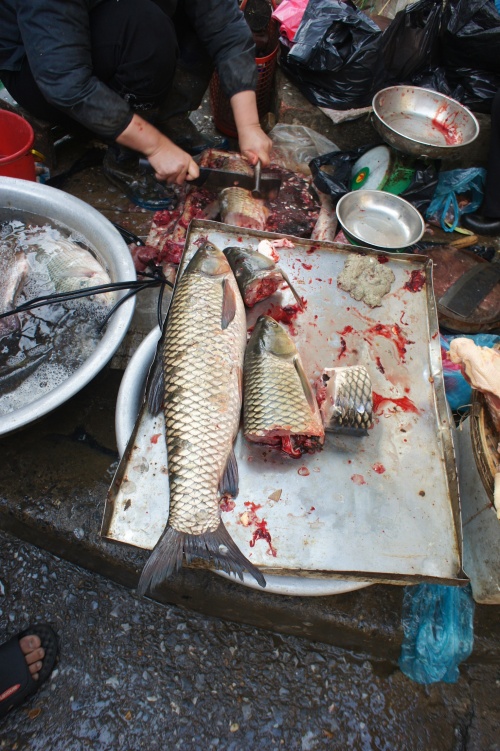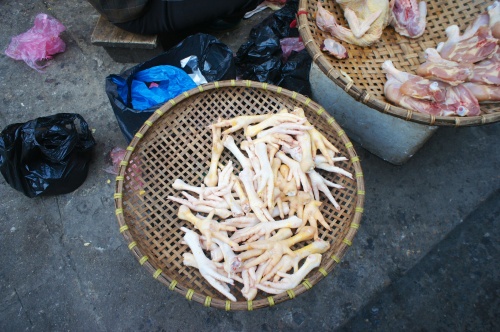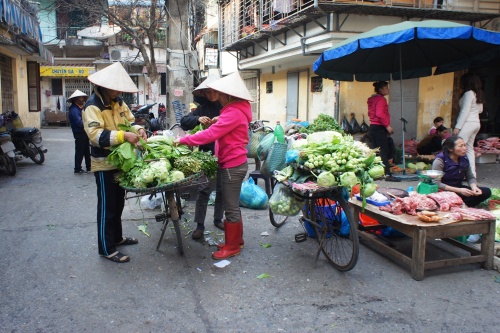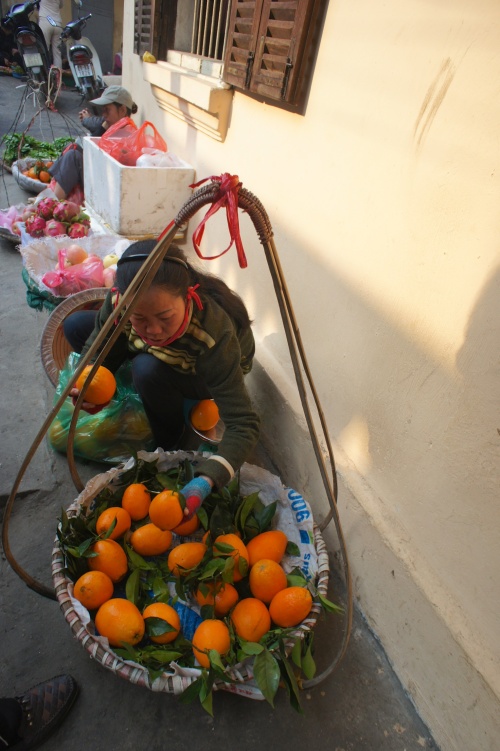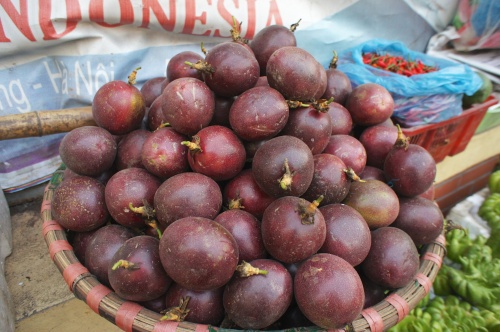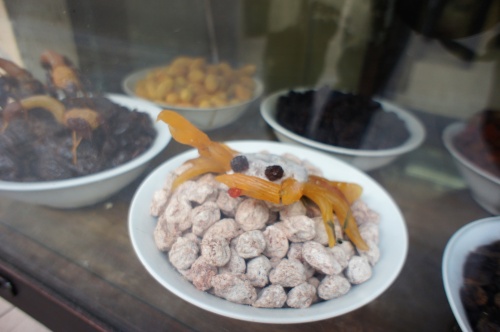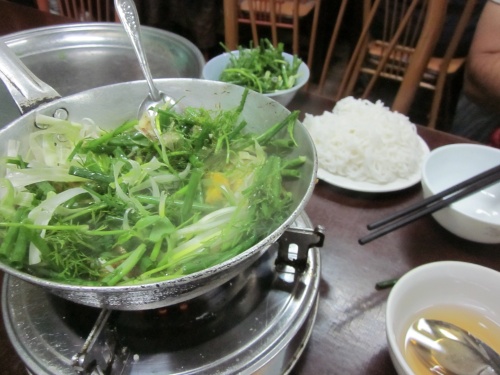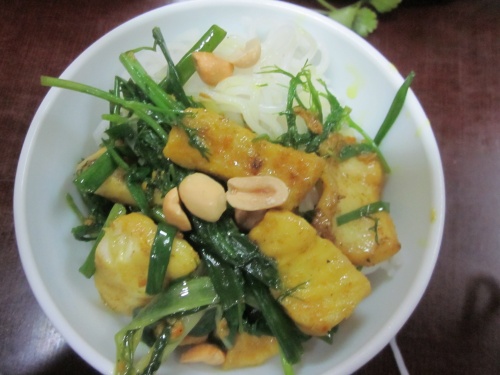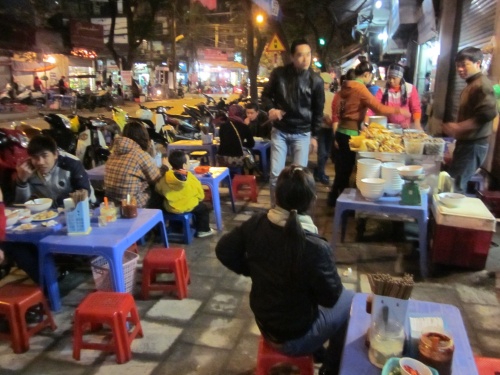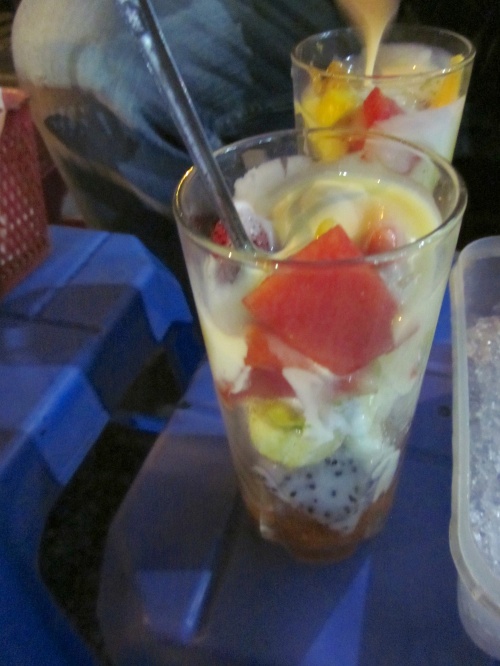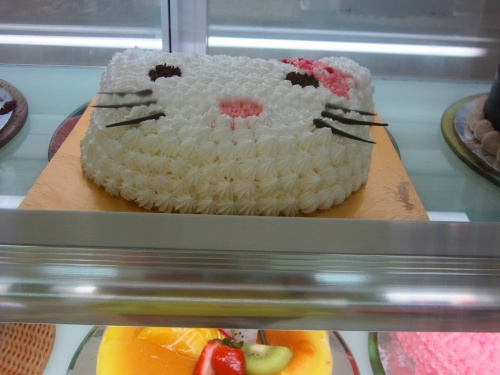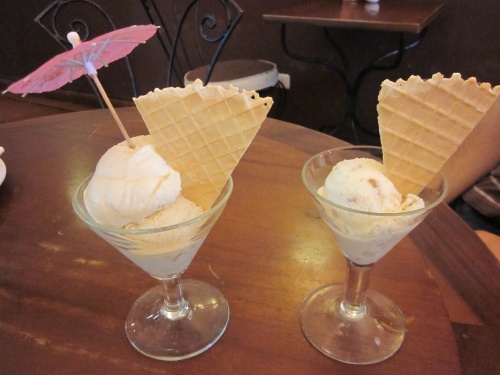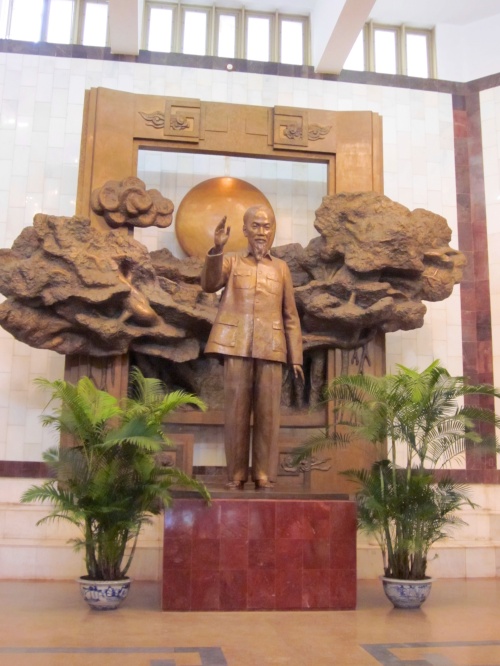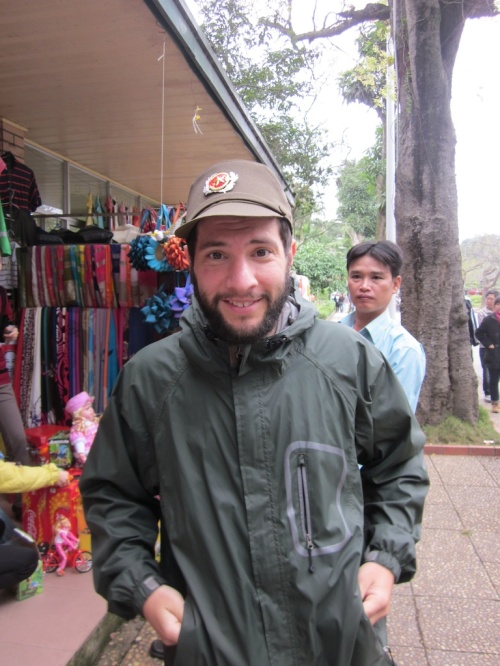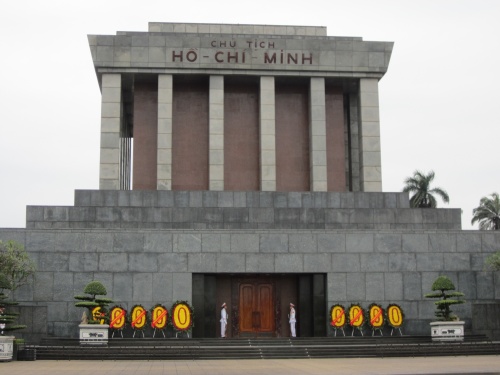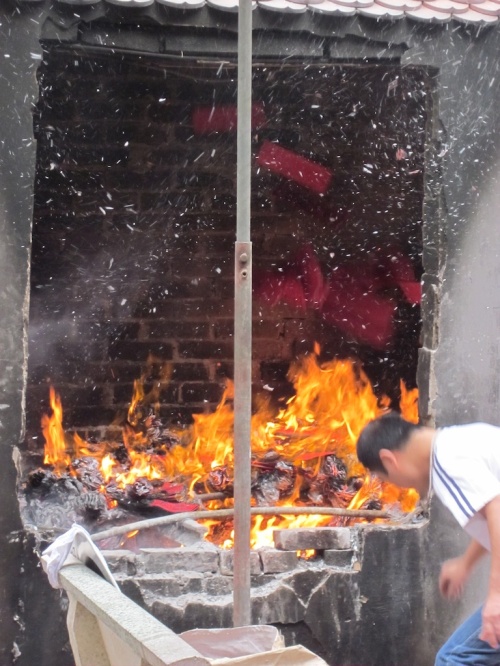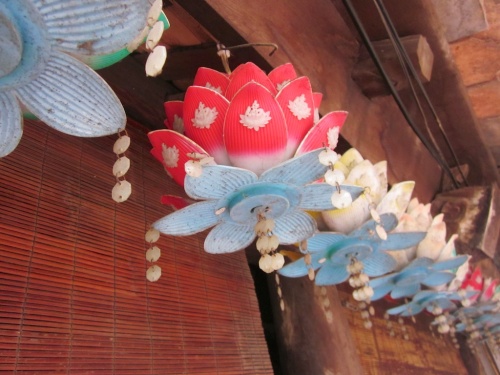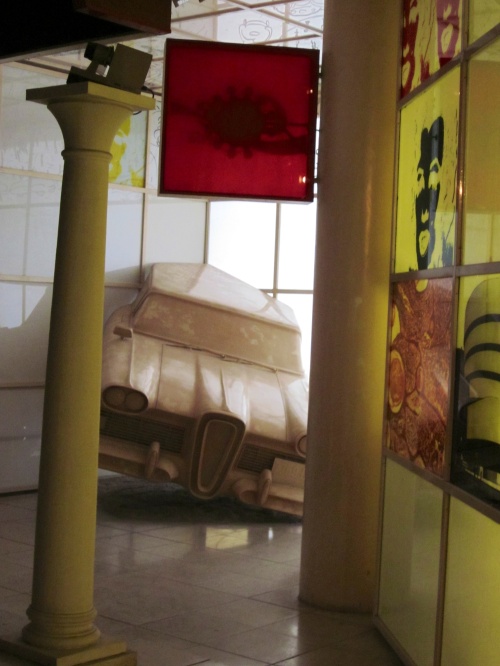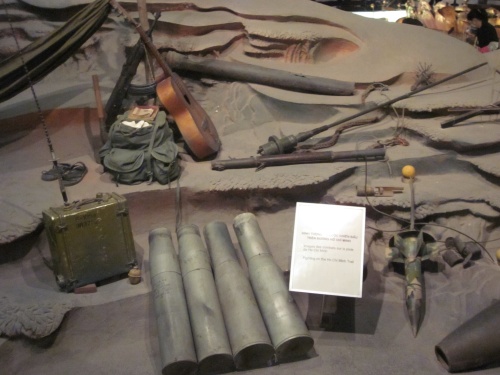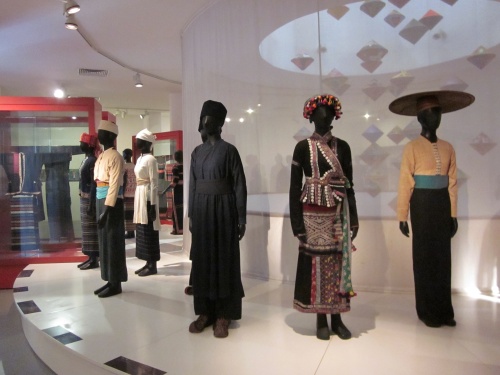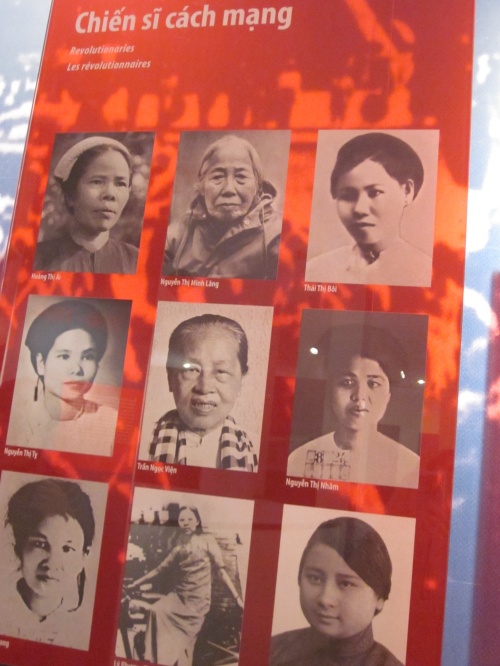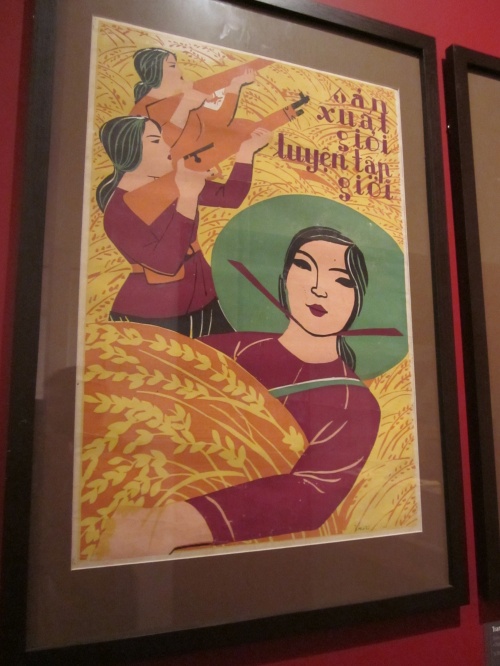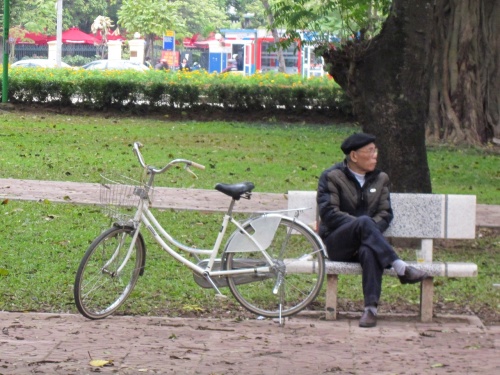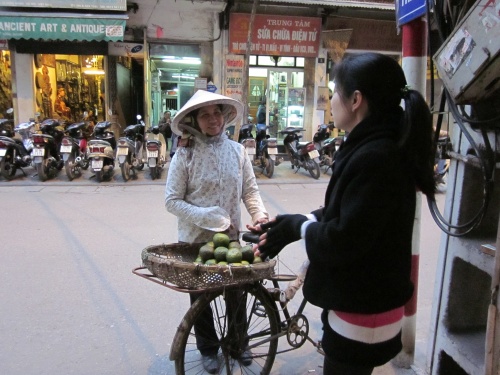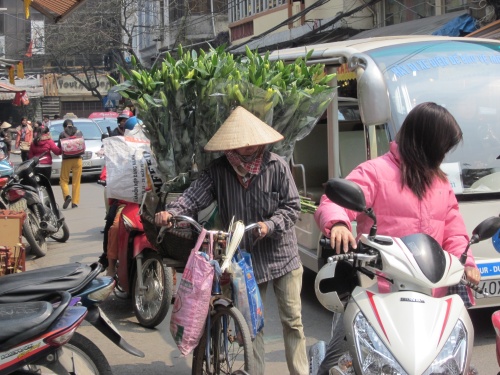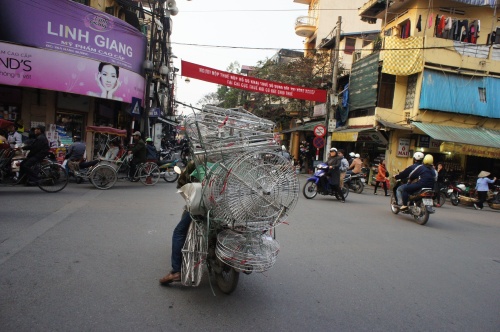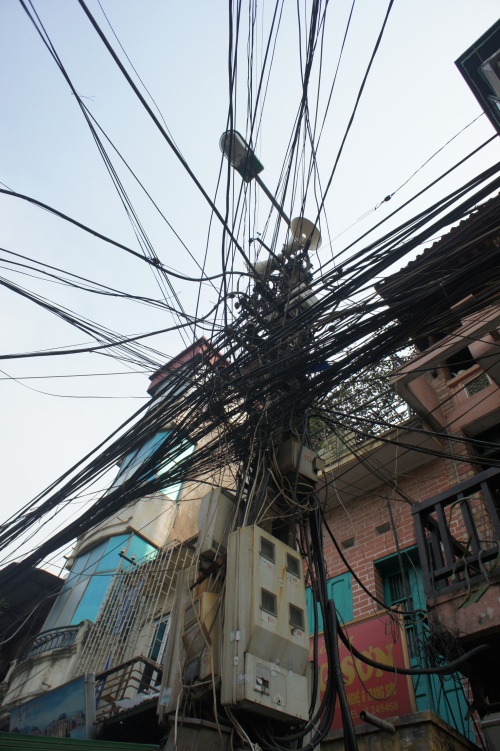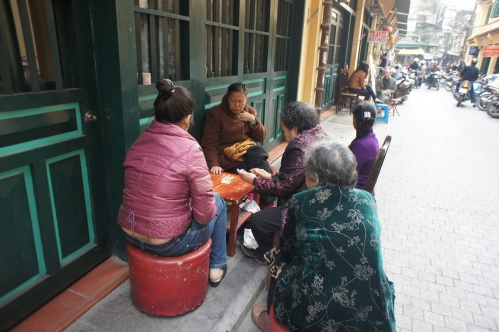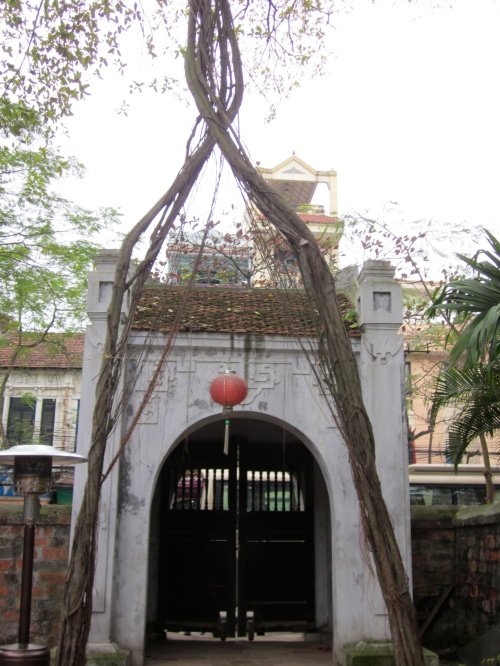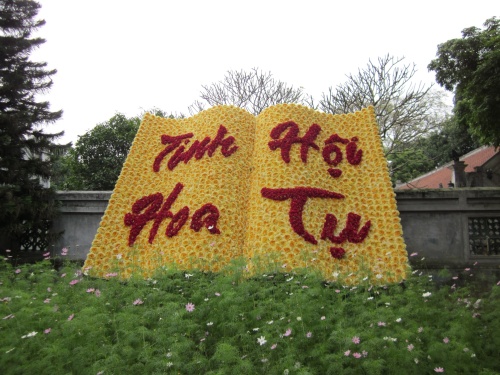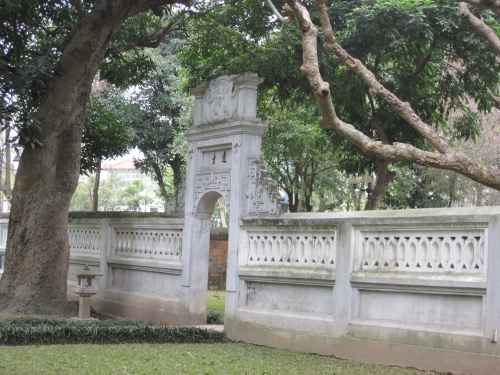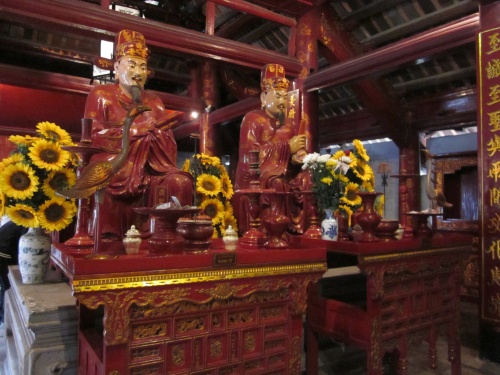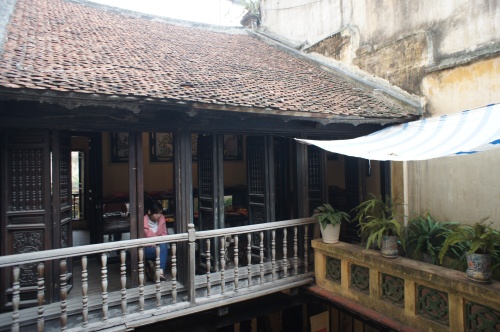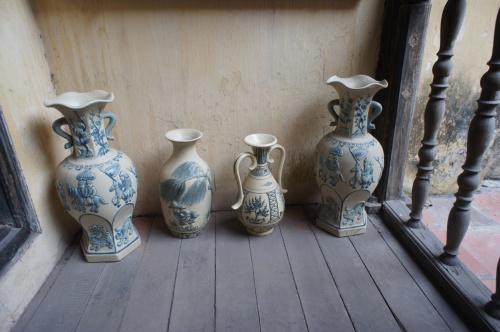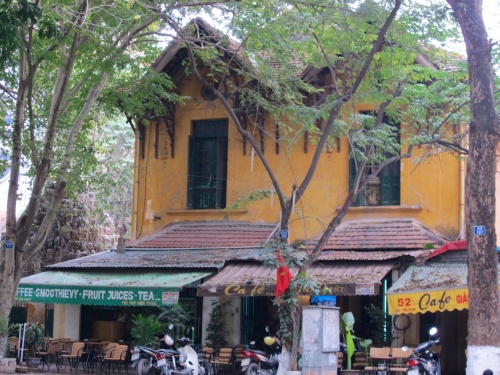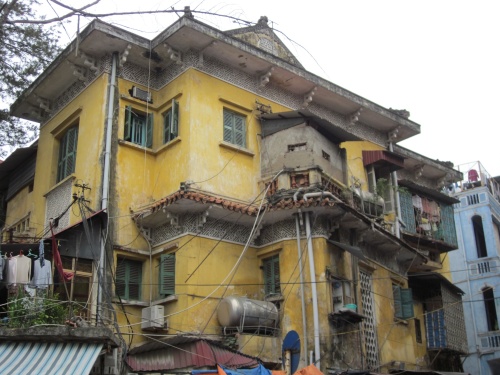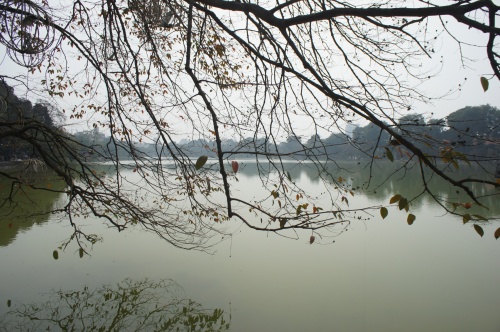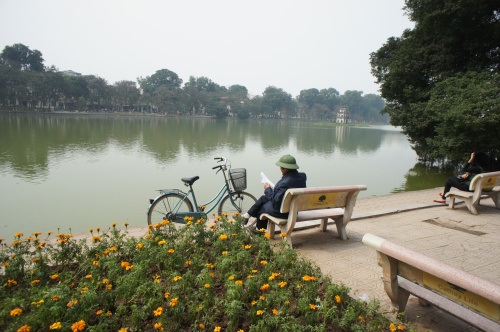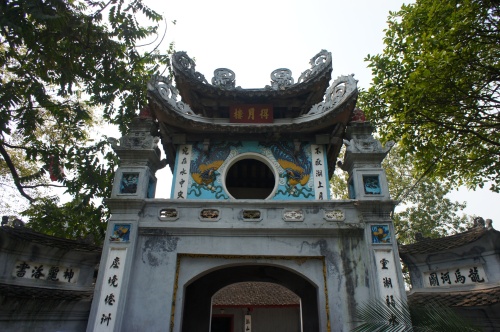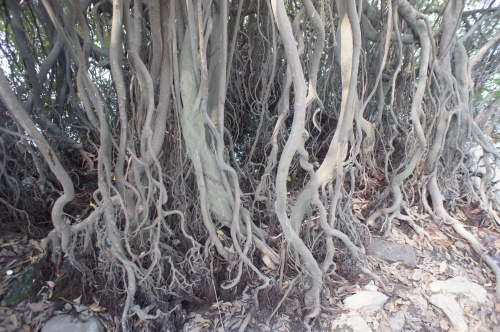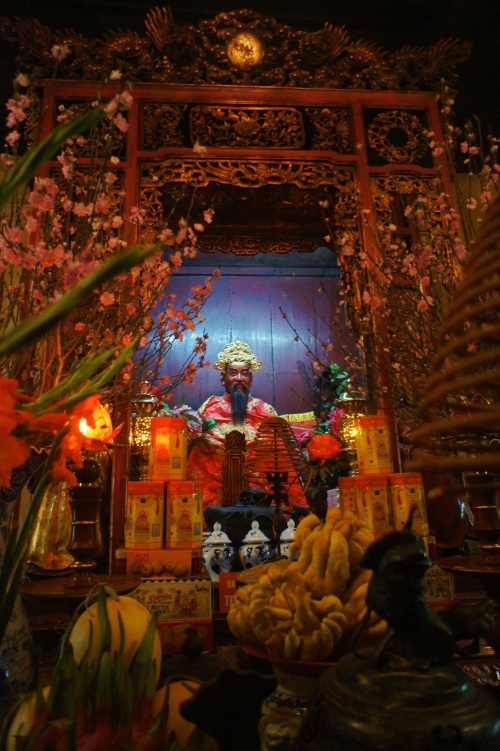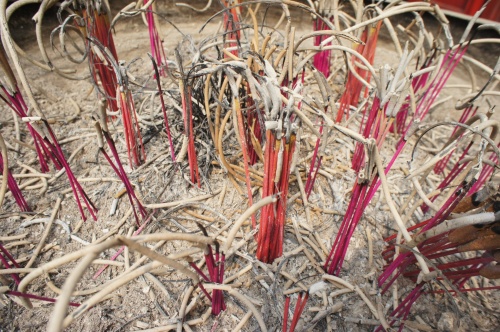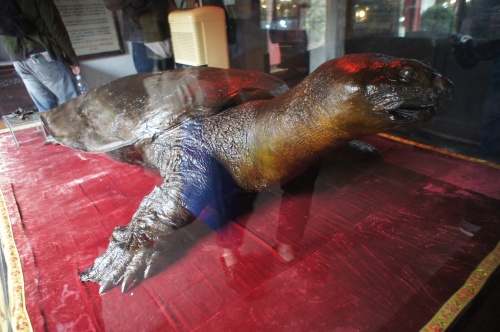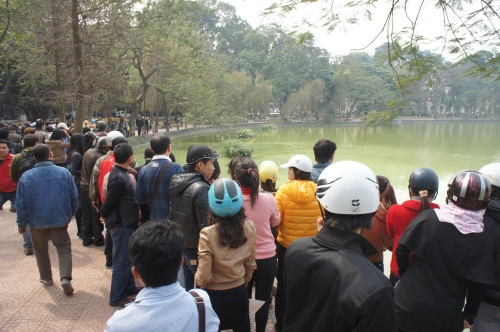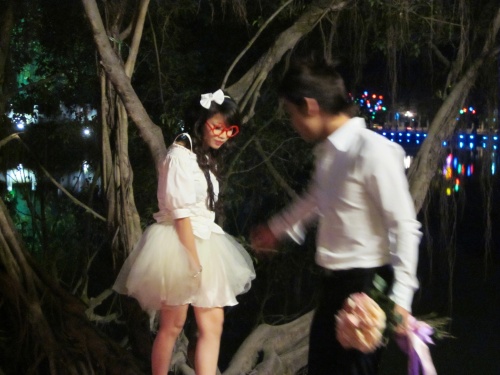Aside from the Sunderbans in India, Ha Long Bay was probably the most disappointing destination for us. Considering that it tops many “must-see” lists (it was also named one of The New York Times’ top destinations for 2012), we were pretty excited to see the UNESCO World Heritage site.
And yes, it is beautiful. The 1,600 limestone islands and islets rising out of the Gulf of Tonkin waters into craggy towers are certainly a haunting site to see. I’m not sure it is one of the new Seven Wonders of the World…but it certainly is magical.
So why were we unimpressed? Well, for one, we had crappy weather. This made for some atmospheric fog, but in general it’s not that fun to be on a boat on a cloudy, cold, and rainy day. Or two days. But the main reason we were so disappointed in Ha Long Bay is the available ways to experience it. It has become so commercialized that almost the only way to experience it, and certainly the easiest way, is via a tour company. While we are generally not ones for tour companies, it is possible to have a good experience on one. But that unfortunately was not the case at Ha Long Bay. As far as we could tell, the only trip on offer was virtually identical from all the companies. If you walk into any hotel or tour company in Hanoi they will happily set you up on one. After searching around and finding little difference (although we did hear stories of getting stuck on crappy boats) we booked through our hotel with Christina Cruises. This means that the bay is full of identical-looking boats and each group goes to one of two caves (which are super cheesy–we went to “Surprising Cave”), rents kayaks from the same few companies in the same place, and then heads to Cat Ba Island for a hike–it was pouring during ours–and a night at a subpar hotel. You’re also stuck on a boat for two days with a bunch of random people–could be great or could be annoying. In our case, it was mostly annoying, although we did chat a bit with some Vietnamese tourists visiting from Ho Chi Minh City. And did I mention the food is very average?
I know, I sound like an anti-social grump. But Ha Long Bay really is a special place and the tourist industry is turning it into a Disneyland of sorts, which is really so unfortunate. I would happily pay good money to go out on a small boat with a captain who could show me some sites that aren’t full of a bunch of other people. But that just didn’t seem like an option. If anyone has done Ha Long Bay this way, please let me know!

